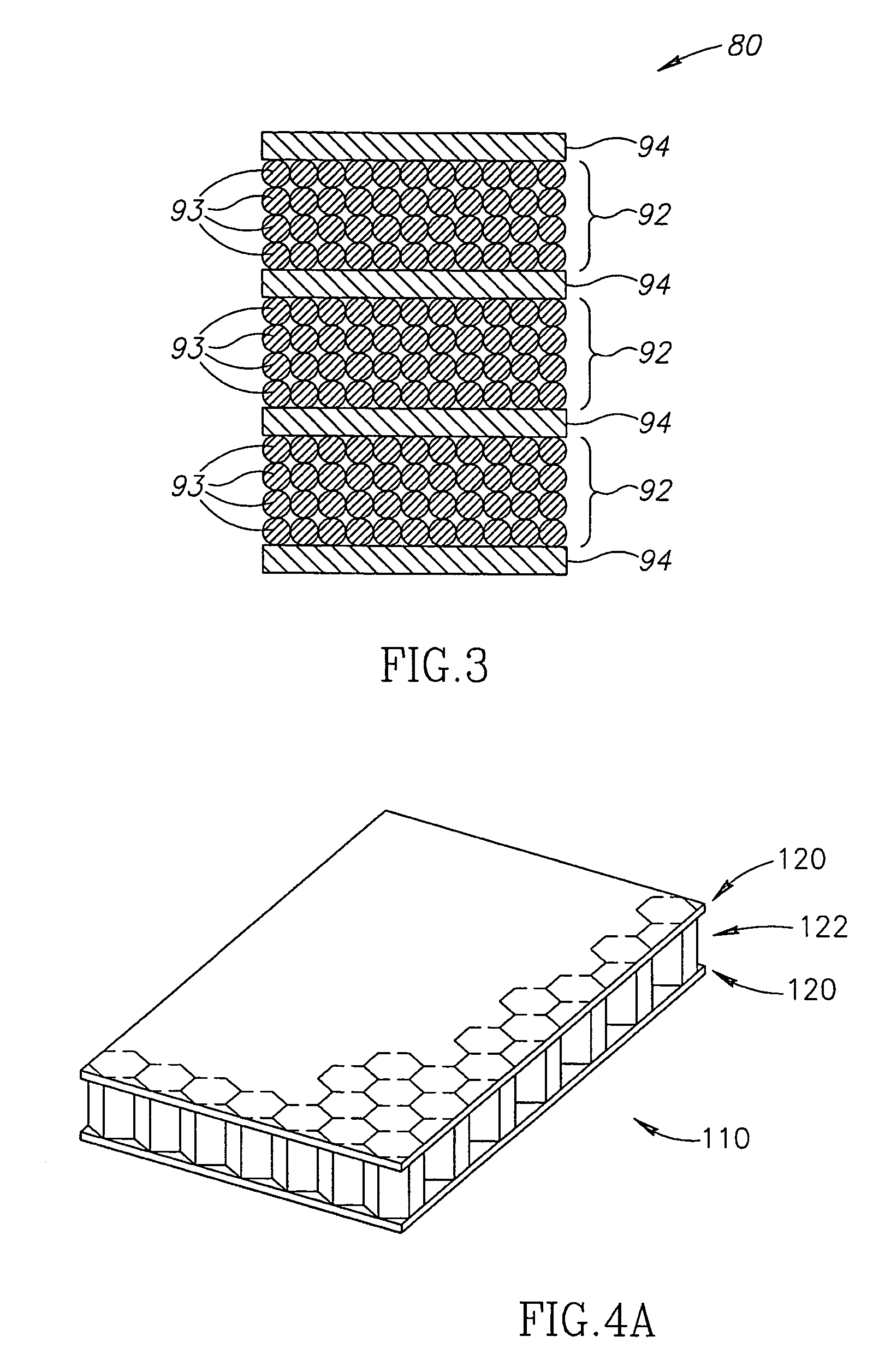Nanostructure aluminum fiber metal laminates
a technology of aluminum fiber and aluminum fiber, applied in the field of nanostructure aluminum fiber metal, can solve the problems of loss of properties, inability to carry significant loads, and insufficient modulus of elasticity of fibers such as glass to produce laminates able to carry significant loads, and achieve the effects of reducing loss of property, increasing strength and structural weight, and effective solution of strength character problems
- Summary
- Abstract
- Description
- Claims
- Application Information
AI Technical Summary
Benefits of technology
Problems solved by technology
Method used
Image
Examples
Embodiment Construction
[0013] The present invention relates to nanostructure aluminum fiber-metal laminate composites. Many specific details of certain embodiments of the invention are set forth in the following description and in FIGS. 1 through 7. One skilled in the art, however, will understand that the present invention may have additional embodiments, or that the present invention may be practiced without several of the details described in the following description.
[0014] In general, embodiments in accordance with the present invention may advantageously provide increased structural weight savings and may reduce the loss of desirable material properties (e.g. strength) during thermal curing associated with fabricating, maintaining, and repairing fiber-metal laminate composites. Because embodiments of the present invention are adapted to handle a variety of weight stresses and curing temperatures, multiple configurations may be suitable for use.
[0015]FIG. 1 is a cutaway isometric view of a nanostru...
PUM
| Property | Measurement | Unit |
|---|---|---|
| diameter | aaaaa | aaaaa |
| grain size | aaaaa | aaaaa |
| elastic modulus | aaaaa | aaaaa |
Abstract
Description
Claims
Application Information
 Login to View More
Login to View More - R&D
- Intellectual Property
- Life Sciences
- Materials
- Tech Scout
- Unparalleled Data Quality
- Higher Quality Content
- 60% Fewer Hallucinations
Browse by: Latest US Patents, China's latest patents, Technical Efficacy Thesaurus, Application Domain, Technology Topic, Popular Technical Reports.
© 2025 PatSnap. All rights reserved.Legal|Privacy policy|Modern Slavery Act Transparency Statement|Sitemap|About US| Contact US: help@patsnap.com



